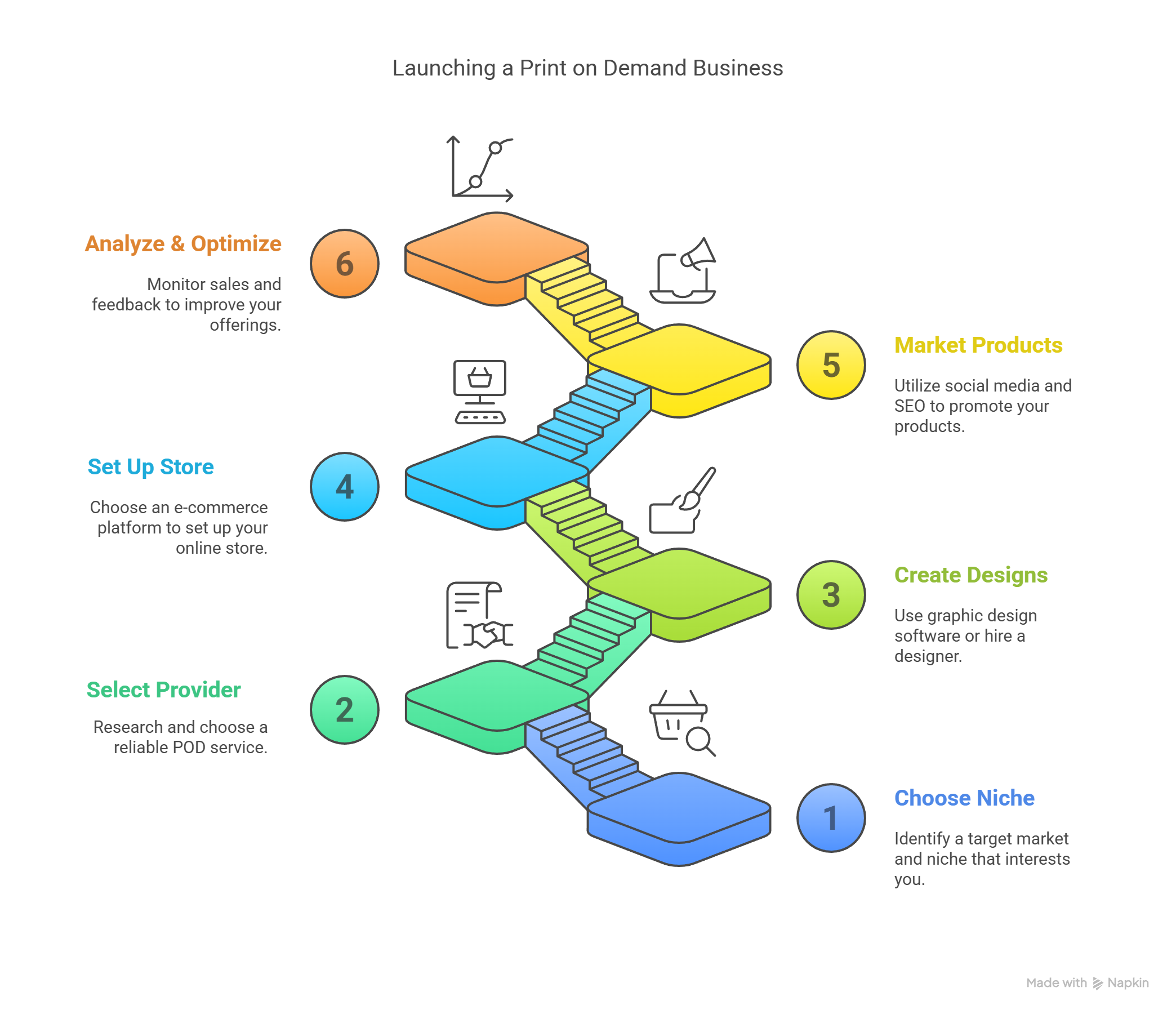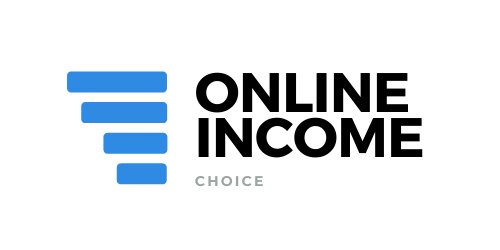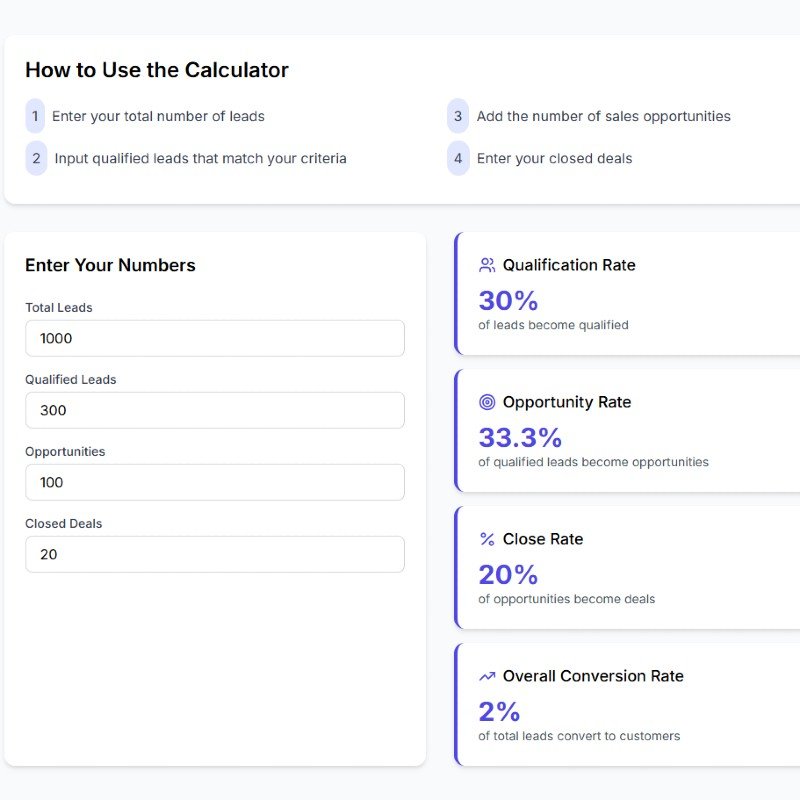From Design To Delivery: Why Print On Demand Is Worth Considering
THOMAS J. WATSON | CHAIRMAN AND CEO OF IBM
Have your heart in your business...
To be successful, you have to have your heart in your business and your business in your heart.
According to recent industry research, 70% of new entrepreneurs now choose low-investment startup models. This significant shift reflects a growing preference for business models that offer flexibility and reduced financial risk in today's digital economy.
Print on demand (POD) represents one of the most accessible entry points into e-commerce. This business model allows creative entrepreneurs to sell custom-designed products without maintaining inventory, managing production facilities, or handling shipping logistics.
This comprehensive guide provides actionable insights for launching and growing a successful print on demand business. Whether you're seeking a side hustle or planning to build a full-time income stream, you'll find the strategic framework needed to navigate this competitive but rewarding space.
Key Takeaways:
- Zero inventory investment required - products are created only after purchase.
- Minimal startup costs compared to traditional retail models.
- Production and fulfillment handled by third-party services.
- Creative design is your primary competitive advantage.
- Business can scale efficiently without proportional workload increases.
- Established platforms manage the technical aspects.
Want to listen? This content is available on Spotify
Ready to start?
Understanding The Print On Demand Business Model
The print on demand business model represents a significant evolution in e-commerce, combining the accessibility of dropshipping with the brand differentiation of custom products. This section explores how POD works and why it's particularly well-suited for creative entrepreneurs with limited startup capital.
How Print On Demand Works: The Process Explained
The print-on-demand process streamlines product creation and fulfillment through a series of interconnected steps:
- Design Creation - Develop original artwork or text-based designs that resonate with your target audience. This creative element forms the foundation of your brand identity.
- Product Selection - Choose appropriate items from your POD supplier's catalog to showcase your designs. Options typically include apparel, accessories, home décor, and stationery.
- Listing and Marketing - Upload your product designs to your chosen sales channel (personal website or marketplace), set prices, and implement marketing strategies.
- Sales Processing - When a customer makes a purchase, they pay you directly through your store platform.
- Order Transmission - Your e-commerce platform automatically forwards order details to your POD partner.
- Production and Fulfillment - The POD service prints your design on the selected product, packages it (often with your branding), and ships directly to your customer.
Throughout this process, you maintain control over customer relationships, marketing strategy, and brand development, while your POD partner handles the operational logistics of production and shipping. This division of responsibilities allows you to focus on growing your business rather than managing inventory or fulfillment operations.
POD vs Traditional E-commerce And Dropshipping: A Comparative Analysis
When evaluating business models for your e-commerce venture, understanding the distinct advantages and limitations of each approach is essential for making an informed decision.
| Business Model | Inventory Requirements | Upfront Investment | Product Customization | Profit Margins | Brand Control |
|---|---|---|---|---|---|
| Print On Demand | No inventory needed | Very low ($100-500) | High customization | Medium (20-30%) | Strong |
| Traditional E-commerce | Inventory required | High ($2,000+) | Full control | High (40-60%) | Complete |
| Standard Dropshipping | No inventory needed | Low ($100-300) | Limited/None | Low to Medium (15-25%) | Limited |
Traditional e-commerce offers higher profit margins and complete product control but requires significant upfront capital for inventory purchases and storage solutions. The financial risk is substantially higher, as you must predict demand accurately to avoid excess inventory.
Standard dropshipping eliminates inventory concerns but typically involves selling generic products in highly competitive markets. Without product differentiation, dropshippers often compete primarily on price, leading to lower profit margins and limited brand loyalty.
Print on demand occupies a strategic middle ground that many new entrepreneurs find appealing. It offers greater brand differentiation than standard dropshipping through custom designs while requiring less capital investment than traditional e-commerce. This balanced approach allows for creative expression and brand building without the financial risks associated with inventory management.
Beginner's Guide To Starting A Print On Demand Business
Benefits And Limitations For Beginners: A Realistic Assessment
Print on demand offers significant advantages for new entrepreneurs, but also comes with important limitations. Understanding both aspects helps set realistic expectations and develop appropriate strategies.
Key Benefits:
- Low financial barrier to entry - Start with minimal investment, focusing resources on design development and marketing rather than inventory.
- Eliminated inventory risk - Avoid capital tied up in unsold stock and eliminate storage costs.
- Rapid product testing - Launch new design concepts quickly without production delays or minimum order quantities.
- Creative freedom - Express your brand identity through unique designs across multiple product categories.
- Location independence - Operate your business from anywhere with internet access.
- Efficient scalability - Expand your product line and sales volume without proportional increases in operational complexity.
Discover The Path To Passive Income Success
Take the first step towards a lucrative future - sign up for exclusive insights and resources!
Notable Limitations:
- Reduced profit margins - Per-item production costs are higher than bulk manufacturing, limiting your pricing flexibility.
- Limited product customization - You're restricted to the supplier's available products and printing specifications.
- Shipping dependencies - Delivery times and methods are determined by your POD partner, affecting customer experience.
- Quality variability - Print quality and product consistency may vary between suppliers and production runs.
- Market saturation - Lower barriers to entry mean more competition, particularly in popular niches.
For beginners, print on demand offers an optimal balance of opportunity and risk. It enables product validation and market testing without significant financial commitment. Success in this model depends primarily on creating distinctive designs that resonate with specific audience segments rather than competing on price or delivery speed.
As your business matures, consider a hybrid approach that incorporates traditional inventory for proven bestsellers while maintaining POD for new product development and niche items. This strategic evolution can maximize profitability while maintaining the flexibility that makes POD attractive to emerging entrepreneurs.





How To Start Your Print On Demand Business: Step-By-Step Implementation
Transforming creative concepts into a profitable print on demand business requires methodical planning and execution. This section provides a structured approach to establishing your POD venture, from market research to operational setup.
Identifying Profitable Niches: Market Research Strategies
The expansive print on demand marketplace rewards specialization. Focusing on well-defined niches allows you to create designs that deeply resonate with specific audiences, improving marketing effectiveness and conversion rates.
Conduct comprehensive niche research using these proven approaches:
- Keyword analysis - Use tools like Google Keyword Planner, Ubersuggest, or SEMrush to identify search trends and volume in potential niches.
- Social media exploration - Analyze platforms like Instagram, Pinterest, and TikTok to discover emerging interests and passionate communities.
- Community engagement - Participate in Reddit communities, Facebook Groups, and forums where potential customers discuss their interests and preferences.
- Competitive assessment - Examine established POD sellers to identify underserved segments within popular categories.
When evaluating potential niches, assess them against three critical criteria:
- Passion intensity - Does the audience demonstrate strong emotional connection and identity association?
- Problem-solving potential - Can your products address specific needs or pain points for this group?
- Economic viability - Does the audience have sufficient purchasing power and willingness to spend?
Historically successful POD niches include pet enthusiasts (particularly specific breeds), professional identity (nurses, teachers, engineers), hobby communities (hiking, gaming, crafting), and cause-based groups (environmental activism, mental health awareness). The most profitable opportunities often exist at the intersection of multiple niches, creating highly specific audience segments with less competition.
Trending Niches For 2025 And Beyond
The POD landscape continuously evolves with cultural and social trends. Recent market analysis indicates these emerging niches show strong growth potential:
- Sustainable living and eco-conscious designs - Products highlighting environmental responsibility and conservation.
- Mental health awareness and self-care themes - Supportive and affirming messaging around wellbeing.
- Remote work culture and home office aesthetics - Functional and motivational items for home-based professionals.
- Personalized family gifts - Custom designs incorporating names, dates, and relationships.
- Specialized hobby communities - Niche interests like urban gardening, drone photography, or specific gaming subcultures.
- Cultural heritage celebration - Designs honoring specific cultural traditions, languages, and ancestry.

Setting Up Your Business Structure: Legal and Operational Foundations
Establishing proper business foundations from the outset positions your POD venture for sustainable growth and protects your personal assets. Begin by selecting the appropriate legal structure based on your specific circumstances.
Business Structure Options:
- Sole Proprietorship - Simplest structure with minimal paperwork but offers no personal liability protection. Suitable for testing business concepts with minimal risk.
- Limited Liability Company (LLC) - Provides personal asset protection while maintaining tax flexibility. Recommended for most POD businesses once they begin generating consistent revenue.
- Corporation - Offers the strongest liability protection but involves more complex regulations and potential double taxation. Generally unnecessary for most POD operations until they reach significant scale.
After determining your business structure, complete these essential setup steps:
- Register your business name - Secure your brand identity through proper registration and consider trademark protection for distinctive elements.
- Obtain necessary permits and licenses - Requirements vary by location, but may include business licenses, sales tax permits, and home occupation permits if operating from a residence.
- Establish separate business banking - Create dedicated business accounts to maintain clear separation between personal and business finances, simplifying tax reporting and protecting personal assets.
Newsletter Sign Up
Discover The Path To Passive Income Success
Take the first step towards a lucrative future - sign up for exclusive insights and resources!
Next, decide on your primary sales channel strategy. Each option offers distinct advantages:
- Custom e-commerce website - Provides complete control over customer experience, higher profit margins, and valuable customer data ownership. Requires more technical setup and marketing investment.
- Established marketplaces - Platforms like Etsy, Amazon, and eBay offer built-in traffic and simpler setup but charge higher fees and limit brand control.
- POD-specific marketplaces - Services like Redbubble and TeePublic offer the simplest entry point but provide the lowest profit margins and minimal brand development opportunities.
Many successful POD entrepreneurs implement a hybrid approach, using established marketplaces to validate designs and build initial revenue while simultaneously developing a branded website for long-term growth and customer relationship building.
E-commerce Platform Comparison
When establishing your own online store, selecting the right platform significantly impacts your operational efficiency and growth potential:
| Platform | Ease of Use | POD Integration | Monthly Cost | Best For |
|---|---|---|---|---|
| Shopify | Medium | Excellent | $29-$299 | Serious POD businesses with growth plans |
| WooCommerce | Complex | Good | $0 + hosting | Budget-conscious sellers with technical skills |
| Etsy | Very Easy | Limited | $0 + fees | Testing designs before building a brand |
| BigCommerce | Medium | Good | $29.95-$299.95 | Scaling businesses with multiple products |
| Wix | Easy | Limited | $23-$49 | Beginners wanting an all-in-one solution |
Creating A Business Plan: Strategic Framework for Success
A well-structured business plan serves as your roadmap to sustainable growth in the print on demand space. Even for small-scale operations, documenting your strategy helps clarify objectives, identify potential challenges, and establish measurable goals.
Your POD business plan should include these essential components:
- Executive Summary - Concise overview of your business concept, target market, and growth objectives.
- Market Analysis - Detailed assessment of your chosen niche, including audience demographics, competitors, and market trends.
- Unique Value Proposition - Clear articulation of what distinguishes your designs or service from competitors.
- Product Strategy - Specific products you'll offer and why they'll appeal to your target audience.
- Marketing Plan - Channels and tactics for reaching potential customers and building brand awareness.
- Financial Projections - Realistic estimates of startup costs, ongoing expenses, pricing strategy, and revenue forecasts.
When developing your pricing strategy, recognize that print on demand typically offers narrower margins than traditional manufacturing. Calculate your base costs (product + printing + shipping) and add your desired profit margin. Successful POD businesses generally aim for at least a 30-40% profit margin to accommodate marketing expenses and sustainable growth.
Include contingency plans for scaling your business as it grows. Consider how you'll handle increased order volumes, customer service demands, and potential expansion into new product lines or niches. The most successful print on demand entrepreneurs plan for growth from the beginning, creating systems that can scale without requiring proportional increases in time investment.
Sample POD Business Timeline
For realistic planning purposes, consider this typical development timeline based on industry averages:
- Months 1-2: Market research, business registration, initial design development.
- Months 3-4: Platform setup, first product listings, branding implementation.
- Months 5-6: Marketing strategy execution, first sales generation.
- Months 7-9: Product line expansion, marketing channel optimization.
- Months 10-12: Scaling successful products, implementing automation. systems.
- Year 2: Brand development, possible expansion to traditional inventory for bestsellers.
Selecting The Best Print On Demand Platforms: Provider Evaluation
Your choice of print on demand service provider significantly impacts product quality, customer satisfaction, and profit margins. This section provides data-driven comparisons to help you select the optimal fulfillment partners for your specific business needs.
When evaluating potential POD services, consider these critical factors:
- Product quality and consistency - The foundation of customer satisfaction and repeat business.
- Integration capabilities - Seamless connection with your chosen e-commerce platform.
- Production and shipping times - Impact on customer experience and satisfaction.
- Geographic coverage - Ability to serve your target markets efficiently.
- Customer service responsiveness - Support quality when issues inevitably arise.

Your selection should align with your business objectives, target audience expectations, and operational preferences. Many successful POD businesses utilize multiple providers to optimize for different product categories or geographic regions.
Top POD Services Comparison: Comprehensive Analysis
The print on demand industry features numerous service providers, each with distinct strengths and limitations. This comparative analysis helps identify which platforms best suit your specific business model.
| Platform | Product Range | Integration Capabilities | Pricing Structure | Quality Control | Best Suited For |
|---|---|---|---|---|---|
| Printful | 170+ products including apparel, home goods, and accessories | Shopify, Etsy, WooCommerce, Amazon, BigCommerce | Premium pricing, higher quality | Consistent quality, robust QA process | Businesses prioritizing brand quality and customer experience |
| Printify | 300+ products with multiple print providers | Shopify, Etsy, WooCommerce, eBay, BigCommerce | Lower price points, variable quality | Varies by print provider, requires testing | Price-conscious entrepreneurs focusing on volume and variety |
| Gooten | 150+ products, including unique items like calendars and dog beds | Shopify, Etsy, WooCommerce, BigCommerce | Competitive pricing, good quality | Automated order routing for optimal quality | Sellers seeking specialty products with balanced pricing |
| Merch by Amazon | Limited to t-shirts, hoodies, sweatshirts, and PopSockets | Amazon only | Set royalty rates, no upfront costs | Consistent quality, strict design requirements | Designers wanting Amazon's massive traffic with minimal setup |
Printful has established itself as a premium POD provider with exceptional print quality and branding options. Their user-friendly mockup generator and consistent output make them ideal for beginners concerned with quality, though their higher prices translate to lower profit margins.
Printify differentiates itself through its global network of print providers, allowing sellers to select suppliers based on location, price, or quality metrics. This flexibility can reduce shipping costs and delivery times, though quality consistency requires careful provider selection and regular sample ordering.
Gooten employs innovative order routing technology that automatically selects the optimal print provider for each order based on product type, destination, and current production capacity. This balanced approach makes them particularly suitable for sellers offering diverse product categories.
Merch by Amazon provides unparalleled exposure through Amazon's marketplace but imposes strict design guidelines and approval processes. The platform works best for established designers with proven sales potential rather than those still testing concepts.
Unlock Your Online Earning Potential
Subscribe and take the first step towards financial freedom by discovering proven strategies for generating income online. Fill in your details below and click the button to get started now!
Emerging POD Platforms To Consider
Beyond the established market leaders, several newer platforms offer unique advantages worth considering:
- Gelato: Global network with local production in 30+ countries, significantly reducing shipping times and international delivery costs.
- Prodigi: Eco-friendly focus with carbon-neutral shipping options and sustainable product selections.
- SPOD: Extremely fast production (24-48 hours) with competitive pricing and reliable quality.
- Printed Mint: Specializes in unique home goods and gift items with premium packaging options.
- CustomCat: Budget-friendly option with 3-day production and 450+ products, ideal for price-sensitive markets.
Choosing Profitable Products To Sell: Product Selection Strategy
Product selection significantly impacts your profit margins, customer satisfaction, and operational efficiency. Successful print on demand businesses strategically choose items that balance customer demand, production quality, and profit potential.
Apparel remains the dominant POD category, with t-shirts representing the most popular entry point. Premium t-shirts typically retail for $25-35 while costing $8-12 to produce, yielding a 50-70% profit margin. Their universal appeal and gift-giving potential make them reliable sellers across most niches.
Best Way To Start Print On Demand In 2025
Home décor items—including pillows, posters, and wall art—often deliver higher profit margins than apparel. These products commonly sell for $30-50 with production costs of $10-15, generating 60-80% margins. They also experience lower return rates than sized apparel items, reducing operational complications.
When evaluating potential products for your catalog, consider these critical factors:
- Profit margin potential - Aim for at least 40% after accounting for all costs.
- Production complexity and error rates - Simpler products generally result in fewer quality issues.
- Shipping costs relative to product value - Heavy or bulky items may have prohibitive shipping expenses.
- Seasonal demand fluctuations - Consider how product appeal varies throughout the year.
- Competition saturation - Some product categories face intense price competition.
Phone cases and accessories represent excellent starter products for new POD businesses due to their low production costs, high perceived value, and straightforward sizing. These items can generate 60-70% profit margins while being inexpensive to ship and less prone to returns.
Industry experts recommend starting with 3-5 complementary product types rather than attempting to offer everything immediately. This focused approach allows you to perfect your designs, marketing, and customer experience before expanding. Many successful POD businesses begin with t-shirts before strategically adding complementary products based on customer feedback and sales data.
Select products that align with your target audience's aesthetic preferences and purchasing habits. Research similar items in your niche to identify price points that balance competitiveness with profitability. Consider ordering samples of your most promising products to verify quality before promoting them heavily.

Product Pricing Strategy: Maximizing Profitability
Effective pricing strategy directly impacts both sales volume and profitability. Consider these proven approaches:
- Cost-Plus Pricing: Calculate base costs (product + printing + shipping + platform fees) and add a fixed percentage markup. This straightforward method ensures profitability but may leave money on the table for high-value designs.
- Value-Based Pricing: Set prices based on the perceived value to your customer rather than your costs. This approach maximizes profit for unique or emotionally resonant designs but requires strong market understanding.
- Competitive Pricing: Align your prices with similar products in your niche. This strategy works well in established markets but may unnecessarily limit margins for truly distinctive offerings.
- Psychological Pricing: Utilize price points like $19.99 instead of $20 to create the perception of better value. Research shows this approach can increase conversion rates by 5-10%.
Most successful POD businesses employ a hybrid pricing strategy. Begin with cost-plus pricing to ensure baseline profitability, then adjust based on competitive analysis and customer feedback. Test different price points for the same design to identify optimal pricing for your specific audience.
Designing And Marketing Your Print On Demand Products
Even with optimal platform selection and business structure, your success ultimately depends on creating appealing designs and effectively marketing them to your target audience. This section provides actionable strategies for both aspects, even for entrepreneurs without design backgrounds or substantial marketing budgets.
Discover The Path To Passive Income Success
Take the first step towards a lucrative future - sign up for exclusive insights and resources!
Design Creation Tools For Non-Designers: Accessible Creative Solutions
Professional-quality design is achievable without formal training thanks to modern digital tools. Several platforms make design creation accessible to entrepreneurs at all skill levels.
Canva stands out as an exceptional resource for beginners, offering templates specifically optimized for POD products like t-shirts, mugs, and phone cases. Its intuitive drag-and-drop interface enables rapid creation of professional-looking designs without technical expertise.
Adobe Express (formerly Adobe Spark) provides similar accessibility with additional creative features. For those seeking more advanced capabilities without the complexity of Photoshop, Affinity Designer offers a one-time purchase option with professional-grade tools.
When creating designs for print on demand products, adhere to these technical best practices:
- Resolution requirements - Use minimum 300 DPI for sharp, professional prints.
- Color considerations - Design with product color in mind (dark designs on light products and vice versa).
- Size appropriateness - Simplify designs for smaller items like phone cases or jewelry.
- Transparency utilization - Employ transparent backgrounds for designs that need to blend with product colors.
If you lack confidence in your design abilities, several alternatives exist. Freelance marketplaces like Fiverr and Upwork connect you with professional designers at various price points. Design marketplaces such as Creative Market and GraphicRiver offer pre-made designs with commercial licensing options. Many successful POD entrepreneurs combine purchased designs with minor customizations to create unique offerings while minimizing design costs.
For inspiration, explore Pinterest boards related to your niche, browse relevant subreddits, or study professional work on platforms like Behance and 99designs. These resources can spark ideas for personalized products that resonate with your target audience.
Design Trends That Sell: Current Market Preferences
Stay competitive by incorporating these design trends that show strong market performance:
- Minimalist illustrations with limited color palettes - Clean, simple designs with strong visual impact.
- Retro and vintage-inspired graphics - Nostalgic elements that evoke emotional connections.
- Custom typography and hand-lettering - Unique text treatments that create distinctive visual identity.
- Watercolor and artistic illustrations - Softer, more organic aesthetic that stands out from digital designs.
- Inclusive and diverse representations - Images reflecting various body types, skin tones, and family structures.
- Nature-inspired and botanical designs - Elements connecting to environmental consciousness.
- Abstract and geometric patterns - Modern, versatile designs that work across multiple products.
Product Photography And Mockups: Visual Presentation Strategy
One significant advantage of print on demand is eliminating the need for traditional product photography. Instead, mockup generators place your designs on realistic product images, showing customers exactly what they'll receive without physical inventory.
PlaceIt offers an exceptionally user-friendly mockup generator with thousands of templates for clothing, accessories, and home goods. Their platform even provides video mockups showing products in use—particularly valuable for social media marketing.
Recommended Resources




While most POD platforms provide basic mockups for free, investing in premium mockups can significantly boost conversion rates. For professional presentation, implement these mockup strategies:
- Contextual lifestyle images - Show products in realistic settings where they would naturally be used.
- Multiple perspective views - Include various angles and close-ups highlighting design details.
- Size reference inclusion - Provide visual size comparisons when relevant to purchase decisions.
- Diverse model representation - Feature models of various ethnicities, body types, and ages when selling apparel.
Although mockups suffice for most situations, ordering samples of your bestselling items allows you to create authentic photographs. This investment typically pays dividends through increased customer trust and improved marketing materials, particularly for premium-positioned brands.
Advanced Mockup Techniques: Differentiation Strategies
Elevate your product presentations beyond basic mockups with these advanced techniques:
- Seasonal contextual mockups - Create holiday-themed or seasonal settings that trigger timely purchasing.
- Usage scenario visualization - Show products being used in specific contexts (coffee mug at a desk during work).
- Customization comparison displays - Create before/after visuals for personalized or customizable items.
- Video mockup implementation - Utilize motion-based mockups for social media advertising to increase engagement.
- Color variant showcases - Display multiple colorways of the same design to encourage multiple purchases.
- Brand narrative visualization - Create mockup series that tell a visual story about your brand values.

Effective Marketing Strategies: Multi-Channel Promotion
With designs created and mockups prepared, implementing effective marketing strategies becomes your focus. Successful print on demand businesses typically employ multiple channels to reach potential customers, with emphasis on visual platforms that showcase their products effectively.
Social media marketing forms the cornerstone of most POD marketing strategies. Each platform offers unique advantages: Instagram and Pinterest excel for visual product display, TikTok can generate viral interest through creative content, and Facebook provides sophisticated targeting options. Rather than spreading efforts thinly across all platforms, focus on mastering one channel where your target audience is most active.
Content marketing builds sustainable traffic and establishes your expertise within your niche. Consider developing a blog that generates passive income covering topics adjacent to your products. For example, if selling fitness-themed apparel, create content about workout routines, nutrition guidance, or recovery techniques. This approach attracts potential customers through valuable information before introducing your products as natural solutions.
| Marketing Channel | Primary Benefit | Time Investment | Cost Structure | ROI Timeline |
|---|---|---|---|---|
| Social Media | Brand awareness building | High ongoing commitment | Low to Medium | Medium-term (3-6 months) |
| Email Marketing | Customer retention and conversion | Medium setup, low maintenance | Low | Short-term (1-3 months) |
| Influencer Partnerships | New audience acquisition | Low (outsourced) | Medium to High | Immediate to short-term |
| Paid Advertising | Scalable customer acquisition | Medium setup, ongoing optimization | High | Immediate (with proper targeting) |
Email marketing consistently delivers the highest ROI for digital businesses. Implement lead generation strategies like offering discount codes in exchange for email sign-ups, then nurture these leads with valuable content interspersed with occasional promotions. A well-crafted email sequence can transform one-time purchasers into loyal, repeat customers.
Influencer partnerships offer rapid audience expansion when you're ready to scale. Focus on micro-influencers (10,000-50,000 followers) within your specific niche who demonstrate strong engagement rates. These partnerships often operate on a product-plus-commission model rather than requiring large upfront payments, making them accessible to growing businesses.
Emphasize Storytelling Over Direct Selling
Regardless of which marketing channels you employ, emphasize storytelling over direct selling. Share the inspiration behind your designs, communicate your brand values, and foster community around your products. Modern consumers, particularly in younger demographics, connect with brand narratives as much as with products themselves.
SEO optimization for your product listings drives organic traffic and reduces customer acquisition costs over time. Research keywords relevant to your products and incorporate them naturally in titles, descriptions, and tags. Most POD platforms provide specific SEO guidelines to maximize visibility within their ecosystems.
Encourage and showcase user-generated content as a powerful form of social proof. When customers share photos wearing or using your products, it provides authentic validation that traditional marketing cannot replicate. Feature these images (with permission) in your marketing materials to build trust with potential buyers.
Social Media Platform Strategy: Channel-Specific Approaches
Each social platform requires tailored content strategies:
- Instagram: Focus on high-quality product photos, lifestyle images, and short-form videos. Utilize Stories for limited-time offers and behind-the-scenes content. Implement shopping tags for frictionless purchasing.
- TikTok: Create entertaining, authentic content showing your products in use. Participate in relevant trends and challenges to increase visibility. Emphasize personality and creativity over polished production.
- Pinterest: Develop vertical pins showcasing your products with keyword-rich descriptions. Organize related products into themed boards that solve specific problems or address particular interests.
- Facebook: Build community around shared values related to your niche. Utilize Groups to foster deeper engagement with loyal customers and encourage peer recommendations.
- YouTube: Create how-to content, product showcases, and design process videos to establish authority in your niche. Optimize video descriptions with relevant keywords for search visibility.
Unlock The Secrets To Building A 6-Figure Online Income
Subscribe and get instant access to our exclusive guide and start generating a life-changing income. Click below to get started now!
Customer Retention Strategies: Maximizing Lifetime Value
Acquiring new customers costs 5-25 times more than retaining existing ones. Implement these proven retention tactics:
- Loyalty programs rewarding repeat purchases with points, discounts, or exclusive products.
- Exclusive design access for returning customers before general release
- Early access to new collections for previous purchasers.
- Personalized product recommendations based on purchase history.
- Post-purchase follow-up sequences providing usage ideas and complementary products.
- Birthday/anniversary special offers to re-engage customers at predictable intervals.
- Referral incentives encouraging customer advocacy through rewards.
Scaling Your Print On Demand Business: Growth Strategies
Once you've established a profitable foundation, scaling becomes your next challenge. Unlike traditional retail businesses, print on demand ventures can expand without proportional increases in operational complexity or overhead costs.
Automation And Systems: Operational Efficiency
Implement these automation tools to maximize your productive capacity:
- Email marketing automation (Klaviyo, Omnisend) - Create triggered sequences based on customer behavior.
- Social media scheduling (Buffer, Hootsuite) - Maintain consistent posting without daily time investment.
- Customer service templates and chatbots - Address common questions without manual intervention.
- Inventory and order tracking systems - Monitor performance metrics across products and platforms.
- Analytics dashboards - Make data-driven decisions about product development and marketing allocation.
Expanding Your Product Line: Strategic Growth
Approach product expansion methodically to maintain profitability:
- Analyze sales data to identify bestsellers and underperforming items.
- Create complementary products for existing customers to increase average order value.
- Develop seasonal collections to drive repeat purchases throughout the year.
- Consider premium product lines with higher margins for established customers.
- Test new niches with minimal initial investment to identify growth opportunities.
Building A Team: Delegation Strategy
As revenue grows, strategic outsourcing frees your time for high-value activities:
- Graphic designers for continuous product development and design refreshes.
- Virtual assistants for customer service and administrative tasks.
- Social media managers for consistent content creation and community engagement.
- SEO specialists for improving organic visibility and reducing ad dependence.
- Paid advertising experts for scaling customer acquisition efficiently.
The Bottom Line
Starting a print on demand business offers an accessible entry point to entrepreneurship with minimal financial risk. The model's flexibility allows you to test designs and products while maintaining other income sources, making it ideal for those seeking to build additional revenue streams without full-time commitment.
Success in this space requires patience and persistence. Begin with a focused approach - one platform, a cohesive collection of designs, and a clearly defined target audience. Many successful entrepreneurs start with t-shirts or simple accessories before expanding their product range based on customer feedback and sales data.
While overnight success stories exist, most profitable POD businesses develop over 12-24 months of consistent effort, testing, and optimization. Focus on building a distinctive brand rather than competing solely on price, as unique designs and strong brand identity provide sustainable competitive advantages in this crowded marketplace.
Glossary Of Key Terms
- Print On Demand (POD): An e-commerce business model where products featuring custom designs are printed only when an order is placed, eliminating the need for inventory.
- E-commerce: The buying and selling of goods and services, or the transmitting of funds or data, over an electronic network, primarily the internet.
- Dropshipping: A retail fulfillment method where a store doesn't keep the products it sells in stock. Instead, when a store sells a product, it purchases the item from a third party and has it shipped directly to the customer.
- Niche Market: A focused, smaller segment of a larger market with specific needs or preferences that are often underserved.
- Passive Income: Earnings derived from a revenue stream that requires little to no ongoing effort to maintain.
- Startup Costs: The expenses incurred during the process of creating a new business.
- Inventory: The raw materials, work-in-process goods, and finished goods that a business holds in stock.
- Fulfillment: The process of preparing and delivering an order to a customer, including packaging and shipping.
- Profit Margin: The percentage of revenue remaining after deducting costs of goods sold and operating expenses.
- Brand Identity: The visible elements of a brand, such as colour, design, and logo, that identify and distinguish the brand in consumers' minds.
- Customer Lifetime Value (CLTV): A prediction of the net profit attributed to the entire future relationship with a customer.
- Search Engine Optimization (SEO): The process of improving the visibility of a website or a web page in a search engine's unpaid results.
- Conversion Rate: The percentage of website visitors who complete a desired action, such as making a purchase or signing up for a newsletter.
- Mockup: A digital representation or image of a product displaying a design, used for marketing and showcasing products without physical samples.
- Automation: The use of technology to perform tasks with minimal human assistance.
- Scalability: The ability of a business to grow and handle increased demand without being hindered by its resources or structure.
FAQ
Starting a Print On Demand business requires minimal initial investment compared to traditional retail. Expect to spend between $100-$300 to cover essential startup costs including domain registration ($10-15/year), basic website hosting ($5-29/month), and design tools like Canva Pro ($12.99/month).
Additional costs include product samples ($50-100), premium website themes ($50-100), and business registration fees ($50-300 depending on location). Unlike traditional retail, you won't need capital for inventory purchases, significantly reducing financial risk.
While design skills are beneficial, they aren't essential for success. Many profitable POD entrepreneurs use user-friendly tools like Canva, Placeit, or Adobe Express, which offer templates requiring minimal design experience. Alternatives include hiring freelance designers (starting around $5-20 per design), purchasing commercial-use designs from marketplaces, or partnering with artists. Understanding what designs will appeal to your target audience is ultimately more important than technical design capabilities.
Both approaches offer distinct advantages. Marketplaces (Etsy, Redbubble) provide immediate access to customers, simplified setup, and lower marketing requirements but charge higher fees (15-30%), limit brand development, and restrict customer data access.
Your own store offers complete brand control, higher profit margins, direct customer relationships, and expansion freedom. Many successful entrepreneurs use a hybrid approach—validating designs on marketplaces while developing a branded website for long-term growth.
Profit margins typically range from 20% to 40% after accounting for all costs. T-shirts generally yield 20-35%, mugs provide 15-25%, and home décor items often deliver higher margins of 30-40%.
Factors influencing margins include supplier costs, shipping expenses, platform fees, and marketing investments. While POD margins are lower than traditional retail (often 50%+), the absence of inventory risk and upfront production costs compensates for this difference.
Print on demand is exceptionally well-suited for entrepreneurs maintaining full-time employment. The business model eliminates time-intensive aspects of traditional retail like inventory management, order fulfillment, and shipping logistics.
Most successful part-time POD entrepreneurs dedicate 10-15 hours weekly to their business, focusing on high-value activities like design creation, marketing strategy, and customer engagement. As your business grows, consider implementing automation tools for email marketing, social media posting, and basic customer service to reduce time requirements further.


